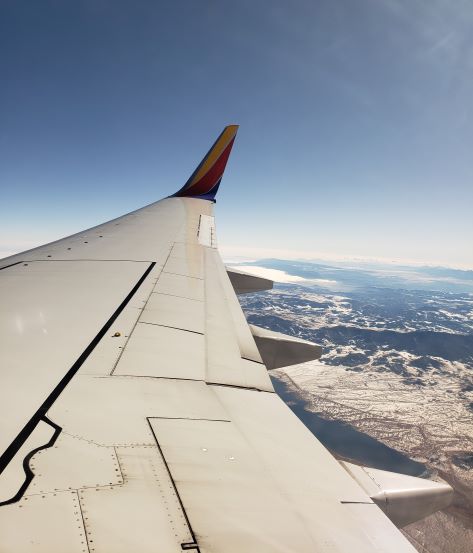You should know by now that wearing face masks when flying is required. Did you know the airlines’ mask mandate has been extended through January 18, 2022. It is possible it will continue to be extended beyond that date.
What does that mean for you? All travelers two years of age and older need to wear a mask whenever inside a U.S. airport or onboard an airplane, regardless of vaccination status.

Airlines can issue fines of up to $3,000 and ban non-compliant fliers for life, making it an expensive mistake to refuse to wear one.
Did you also know that wearing masks when flying can be different on different airlines? Bandanas and scarves are generally not sufficient. Some airlines have more restrictions for cloth face coverings or masks with vents. All airlines indicate that face shields may be worn in addition to a mask. Keep in mind wearing a face shield is not an alternative to wearing a mask.
If you are traveling in the US, the CDC has issues specific requirements for what constitutes an acceptable mask when flying. Most US airlines follow these guidelines and some have added even more specific requirements.
These are a few airlines I found that have specific requirements for wearing masks when flying.
Alaska Airlines allows cloth masks made with two or more layers of breathable fabric. Gaiters are allowed if they have two layers or are folded to make two layers. Masks that do not cover your nose and mouth are not accepted. Likewise, masks cannot have any slits or exhalation valves.
American Airlines lists masks or 2-layered secured cloth as acceptable face coverings. Unacceptable face coverings include balaclavas, bandanas, gaiters, scarves, ski masks, and face covers with exhaust valves or vents.
Delta Airlines specifies that the type of mask allowed onboard follows CDC guidance. Permitted masks include disposable surgical or medical masks, cloth masks with tightly woven fabric, valve-free respirator masks (N95 or KN95), fabric masks with a clear plastic window, and gaiters with two layers. Any mask with an exhaust valve is not permitted and, like other airlines, bandanas, scarves, ski masks, and balaclavas are not sufficient.
Frontier Airlines states that face coverings must fit snugly over your nose and mouth and must be secured under the chin. Open-chin triangle bandanas and face coverings containing vents are not allowed.
Hawaiian Airlines says any mask must meet CDC requirements. Cloth masks should be made with two or more layers of breathable fabric, which do not let light through.
Jet Blue requires travelers to wear masks that do not have any vents or exhalation valves. The airline also states that personal face/body tents or pods, personal air purifiers, ozone generators, and masks connected to tubing or battery-operated filters are not allowed.
Southwest basically follows the CDC guidelines to a tee. Masks must completely cover the nose and mouth and fit snugly with ties, ear loops, or elastic bands that go behind the head. Clear masks or cloth masks, medical masks and N95 respirators are allowed, as well as neck gaiters with two layers of fabric. Masks may not have any exhalation valves.
Spirit states that masks must have at least two layers of fabric such as disposable non-medical face masks, or multi-layered cloth. Open-chin triangle bandanas and face coverings containing valves or mesh material are not appropriate.
United Airlines says travelers are required to wear a mask with no vents and bandanas are not permitted. Masks must be worn at customer service counters, airport lounges, gates, baggage claim, and on board during the entire flight.
Air France requires flyers to wear a surgical mask or an FFP1, FFP2, or FFP3 type mask without an exhaust valve. Cloth masks are not authorized.
Finnair says you must have a surgical mask or a valveless FFP2, FFP3, or another valveless mask following the equivalent standards, such as an N95. Masks made of fabric are not accepted. If you’re just flying within Europe, kids under 7 years old don’t need a mask, but all passengers above 2 years old must wear a mask when flying to/from the USA.
Lufthansa says you must wear either a surgical mask, FFP2, or KN95/N95 mask. Cloth masks are no longer permitted for flights to and from Germany.
Swiss requires these face masks, FFP2, KN95, or N95 standard, or surgical masks. When flying within Europe, children under 12 years of age do not need to wear a mask, but all passengers over the age of 2 must wear a mask when flying to/from the USA.
Are there any exceptions to wearing face masks when traveling?
The CDC lists a narrow subset of individuals who may be exempt from wearing a mask for medical reasons. This includes people with certain disabilities or requirements that would not allow them to wear a mask safely. Individuals who want to request an exemption must contact the airline for the procedures to be followed. Some airlines require you to fill out forms and send a physician’s signature up to a week in advance.
When looking for more tips, check out https://travelsandescapes.net/